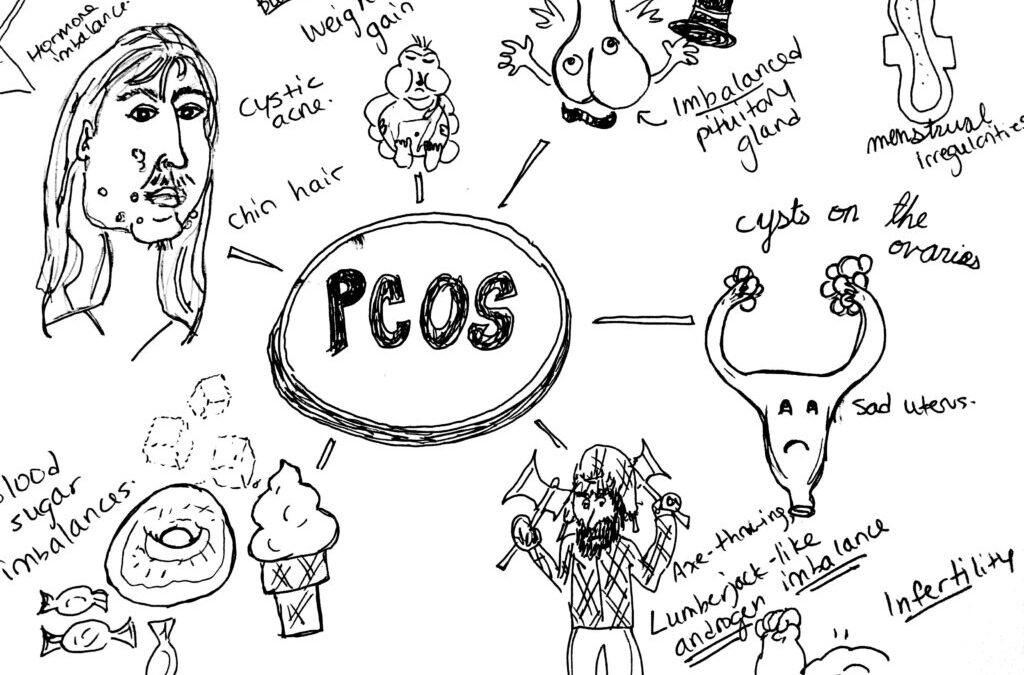
by Dr. Talia Marcheggiani, ND | Mar 19, 2015 | Creativity, Diet, Endocrinology, Exercise, Fertility, Health, Lifestyle, Medicine, Mind Body Medicine, Nutrition, Paleo, Sex, Sexual Health, Skin health, Weight Loss, Women's health
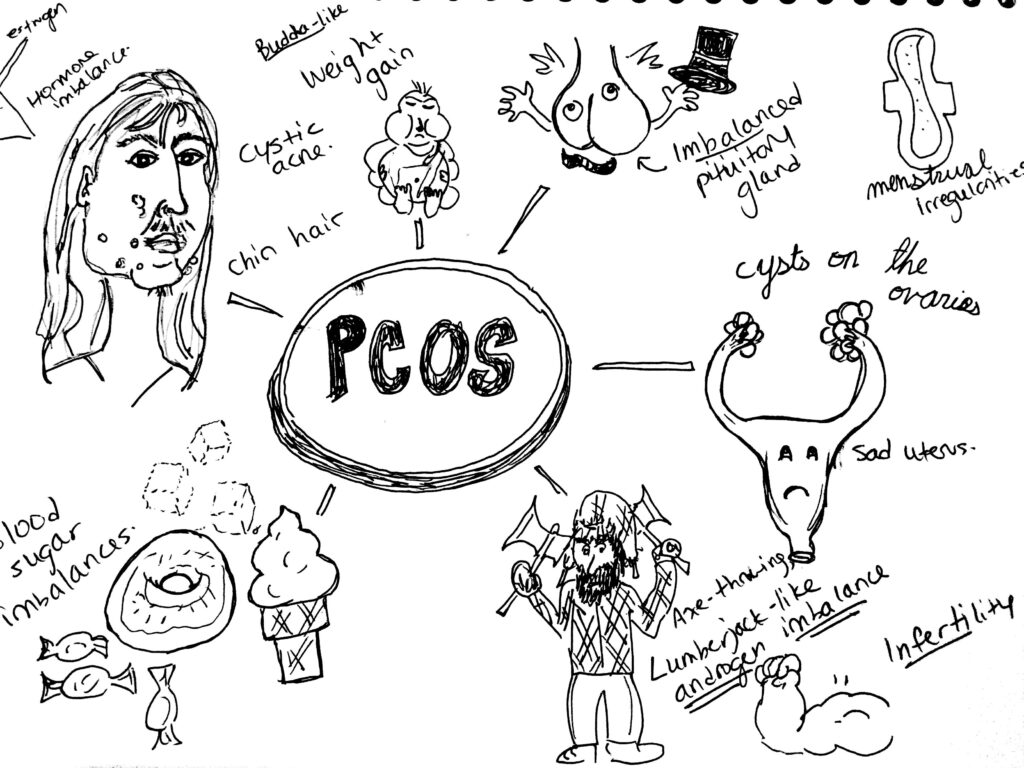 PCOS, or Polycystic Ovarian Syndrome, a condition which affects an estimated 10% of women in North America and is the most common endocrinological dysfunction in women.
PCOS, or Polycystic Ovarian Syndrome, a condition which affects an estimated 10% of women in North America and is the most common endocrinological dysfunction in women.
Its symptoms and the people it affects are as diverse as there are people affected; it’s one of my favourite conditions to treat.
Signs and Symptoms:
PCOS is characterized by hormone dis-regulation. Oftentimes it presents with cysts on the ovaries, but not always. In PCOS there is often elevated blood glucose and other markers of insulin resistance. There are often issues with menstruation: the absence of periods (amenorrhea), or heavy and irregular bleeding (dysmenorrhea). Weight gain is common—although some women with PCOS can be thin—as is hormonal acne and hirsutism, a nice word for male-pattern hair growth: excess hair growth around the chin and upper lip, the chest or navel region. Pelvic pain around ovulation may occur when cysts rupture. Infertility is common in women with this condition.
PCOS is a syndrome, rather than a disease, which means it presents as a collection of symptoms that can be varied in their presentation and severity. Lab work may read that estrogen, testosterone and LH (a hormone produced by the pituitary gland and ovaries) are high and progesterone and FSH (a hormone released by the pituitary gland) are relatively low. However, what brings a woman with PCOS or PCOS-like symptoms into my office is varied and usually consists of any combination of visible symptoms: hair growth, weight gain, acne, menstrual irregularities or infertility.
Etiology:
We are uncertain how the collection of symptoms that is PCOS arises. One prominent theory is that issues with blood sugar and insulin regulation create ovarian cysts or disruptions in the secretion of sex hormones. This causes the ovaries to release more LH, which has the power to raise testosterone. High insulin, testosterone and estrogen can cause weight gain, hair-growth, acne, absence of ovulation (anovulation) and the inability to maintain the uterine lining and therefore carry a pregnancy to term.
Diagnosis:
PCOS is diagnosed by symptoms. It involves a combination of symptoms: amenorrhea (or absence of menstrual periods), infertility, hair growth on the face, acne and insulin resistance. The presence of ovarian cysts, as detected on an ultrasound were once diagnostic, but many patients present with symptoms and are cyst-free. An increase in LH and testosterone, with lab values indicating insulin resistance and metabolic syndrome, can also lead doctors to suspect PCOS, when appearing in conjunction with other symptoms.
Because it is a syndrome, patients often come into my practice with a variety of complaints. Some come in to deal with their skin health, others want help with fertility or menstrual cycle regulation and many others come in with weight loss goals.
Conventional Treatment:
Treatment in conventional medicine is simple: oral contraceptives. If your testosterone is high and estrogen and progesterone are out of whack, the conventional medical system tells us to simply override natural hormone production, or lack thereof, with synthetic versions of the same thing. For my professional opinion on regulating hormones with oral contraception, see my post on the birth control pill (which I no longer take). These birth control pills often contain chemicals that prevent the secretion of male hormones. This helps clear up acne and hair growth.
Medication for type II diabetes, Metformin, is used to help regulate insulin. Patients experience weight loss on Metformin, as it helps control insulin resistance, however it also depletes vitamin B12, which means that regular injections of B12 are necessary to avoid deficiency symptoms. Further, Metformin doesn’t address the root cause of insulin resistance, which is most likely lifestyle and hormonal imbalance. This means that patients will be medicated (and therefore receiving B12 injections) for life.
I do not mean to negate the fact that oral contraception and Metformin have helped countless women. I respectfully acknowledge the fact that the lens I look through is one of a different, more natural and whole-bodied approach to medicine that aims to treat the individual by addressing the root cause of disease.
In short: I prefer to try it the naturopathic way first.
Naturopathic Treatment:
Lifestyle. Naturopathic remedies are very effective, but often quite involved. They begin with lifestyle modifications—a low glycemic index diet like the Mediterranean or the Paleo diets, that emphasize whole foods, like fruits, vegetables, healthy fats and lean protein and eliminate sugar, white flours and white carbohydrates. Exercise is important in treating PCOS. One of my professors advocates intense cardio, such as high-intensity interval training, or weight-lifting 5-6 days a week. This must be done for several months before effects are seen and blood sugar and other hormones are regulated.
Supplementation and botanicals. Myo-inositol, a B vitamin, is a first-line treatment for PCOS in the natural health world. The amount of research steadily growing behind its use should probably make this gentle and effective treatment first-line for treating PCOS in all healthcare fields. Studies show that, when dosed properly, inositol can regulate blood sugar, assist with weight loss and regulate menses, even promote fertility.
Herbs like Vitex agnus-castus, or chaste tree, can help regulate the balance between estrogen and progesterone. Spearmint and Serenoa repens, or saw palmetto, can help decrease male hormones in the body. Gymnema and berberine are other therapies useful for regulating blood sugar and helping with weight loss.
Ensure that you are receiving counsel from a licensed naturopathic doctor before supplementing. The dose and quality of supplements and herbs is essential to feeling better—don’t hack it in the health food store alone!
Acupuncture. Acupuncture has been shown to be effective for promoting fertility. I have had some good success in promoting pregnancy and fertility with acupuncture in my practice. Fertility clinics in Canada now use acupuncture before and after IVF treatments to ensure treatment success. It also helps to relieve stress and lower cortisol, which helps with insulin-lowering and blood sugar management.
In Traditional Chinese Medicine, PCOS can manifest as dampness, Qi or yang deficiency or issues with the Spleen or Kidneys. Acupuncture can help tonify and balance these patterns.
Homeopathy. I have had success using homeopathy in conjunction with lifestyle and supplementation in treating PCOS. Homeopathy acts deeply on the energetic level of disease, working on the level of emotions and sensations and working to address the energetic cause of disease. It involves a thorough interview and an individualized prescription from a licensed naturopathic doctor or homeopath.
Mind-Body Medicine. The ovaries are located at the level of the second chakra, which is an energetic centre in the body associated with sexuality and creativity. Christine Northrup, MD, asserts that the presence of ovarian cysts represents an energetic blockage in our creative power and unmet emotional needs. Louise Hay, author of “You Can Heal Your Life” tells us that ovarian cysts represent some sort of past hurt that we can’t let go of. Crying, journalling and identifying repressed emotions can help to remove these energetic blockages. In many women with PCOS, there is an imbalance in the identification with their femininity, or what it means to be a woman.
Sometimes our bodies alert us of imbalances in our emotional lives through the presence of physical symptoms. As a naturopathic doctor, it is essential I address all levels of the person—mentally, emotionally and spiritually, not simply physically.
PCOS is a diverse and challenging condition to treat that can cause a lot of hardship for the women who suffer from it. However, a diagnosis of PCOS can be an opportunity for growth and transformative healing through naturopathic medicine. For this reason, I find it can be one of the most interesting and rewarding conditions to treat. Contact me to find out more.

by Dr. Talia Marcheggiani, ND | Mar 2, 2015 | Clinic, Community, Creativity, Finding yourself, Gratitude, Health, Patients, Private Practice
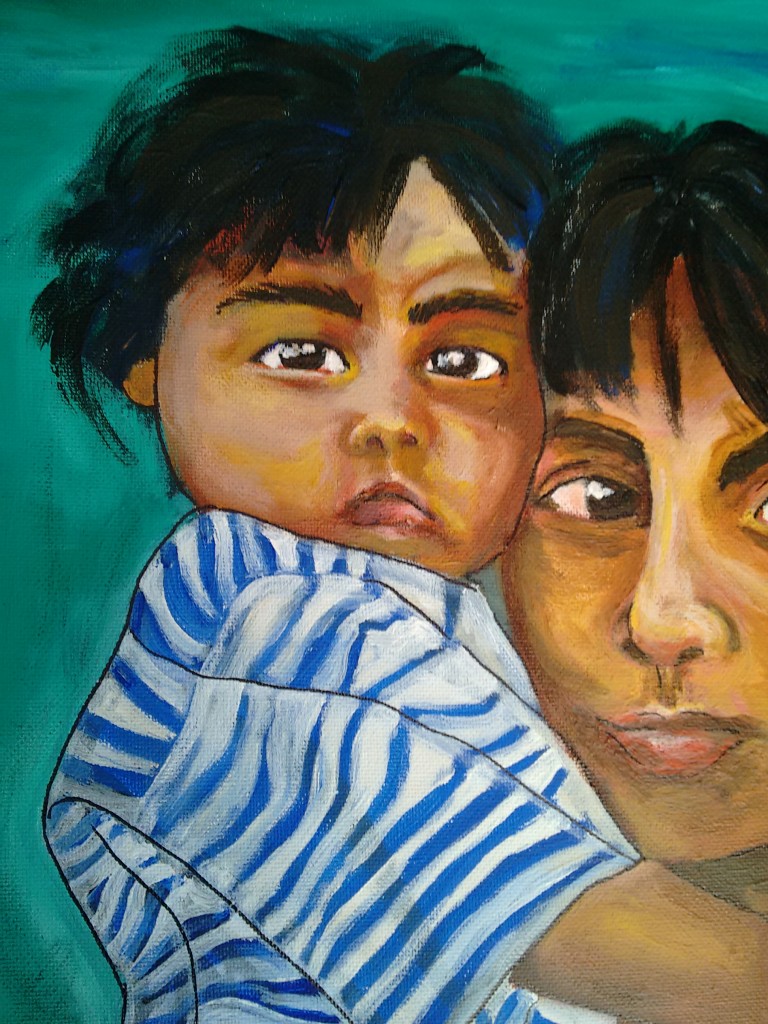 I wrote this post a few months ago while beginning my private practice. When I first wrote this post, the next week an incredibly good-fit-of-a-patient walked in my door! A month later, another booked in! I have been blessed from the start with a roster of wonderful people who have found their way into my practice. I’m posting this blog post to celebrate that and keep morale high.
I wrote this post a few months ago while beginning my private practice. When I first wrote this post, the next week an incredibly good-fit-of-a-patient walked in my door! A month later, another booked in! I have been blessed from the start with a roster of wonderful people who have found their way into my practice. I’m posting this blog post to celebrate that and keep morale high.
No, I don’t have her yet (edit: there are a few potentials, though!). Instead, I began practice with a few individuals who reflected back my insecurities, made payment awkward (likely more about me than about them) or who threaten to complain about me to the regulatory board (long story) and keep forgetting to follow their treatment plans.
Naturopathic doctors have the second largest scope of practice in Ontario besides medical doctors. We are primary care providers. We are highly trained. If I wanted to get filthy rich I’d have done something else, anything else. I am 29 and I wear sweaters from the Salvation Army and live with my parents—I just want to help people.
I digress. My perfect patient does not yet exist, but in a marketing workshop I took in November, they told us to imagine our ideal patient—where does he or she live, work, drink his or her coffee? I decided to create a blog out of it, killing a few birds (free range turkeys) with a single (humane) stone. That being said, if you read to the bottom of this post and find out that you are, in fact, the perfect patient, or know one that is, then please message me and I will get back to you as soon as I can.
The Perfect Patient
The perfect patient has extended health benefits. However, she understands that health is worth paying for and is willing to go beyond her benefits in order to feel better.
She has faith in naturopathic medicine and in my doctoring skills. She understands the work and education it took to get to where I am. She respects that and recognizes that my opinion is far more informed than that of a health show host, blog poster or supplement store employee.
The perfect patient knows me. She’s heard of me, or read my professional blog, or been to a talk. She jives with my spirit as a doctor and therefore is already sold on me and naturopathic medicine before she comes into the office.
She is compliant. She understands what education and training is behind the treatment recommendations that are prescribed to her. She follows them, determined to make positive changes to her health. And, because she does this, she gets better. She takes an active role in her own health and doesn’t hesitate to help me understand what treatments are feasible and appropriate for her.
She tells all her friends and family about me and how I’ve helped her. She refers them all to me. Like 10-20 people are direct referrals from her.
These referrals begin to refer as well. It’s a great practice because they all connect with my philosophy and follow my recommendations and are willing to pay for my services and don’t cancel their appointments without giving 24 hours’ notice.
They are all respectful of my time. They don’t overstay their visits or bombard me with emails, unless they are genuinely confused about something or they have a legitimate concern and they understand that, if it requires more than 15 minutes of my time then we need to book a follow-up in person or a phone consultation and they know that requires payment. After all, I am a professional.
They all follow my blog and recommend it to friends. One of their friends is a big-deal editor and signs me on for a book deal. I sell a lot of books and this generates even more patients who are in line with my beliefs and the medicine I practice.
Everything flows, naturally and easily. I learn a lot. These patients are introspective and interested in growing. They know that health is the foundation of a good life. They want to make the most out of life, to challenge themselves in interesting ways and embrace love and creativity and spirituality. We have great conversations that allow us to benefit and look at life a little differently. My clinic becomes a place of healing and spiritual growth.
“I feel better just by spending time in the waiting room.” Say the new patients these days.
I start a Alternative Healing Collective with my current clinic owner, an MD/Homeopath. We employ different healthcare providers and pay them salaries. The patients pay a yearly rate and then are charged a smaller fee for a visit. Practitioners and patients form boards and vote on changes and practices of the clinic. It becomes a place of progressive private healthcare.
Students come from around the world to learn from our methods and copy our model of providing accessible, effective healthcare.
We dedicate our time to helping those who can’t pay for the services but are in line with our principles and would benefit from our care. We travel to countries and set up clinics there. We give talks, workshops and classes. We do community acupuncture.
Our clinic becomes a community centre for healing, where patients can drop by, have a tea, listen to a talk or take a class, see a practitioner, meditate, take out books on health or just sit and converse with like-minded individuals. We are closely connected with the arts, especially the visual arts and have non-toxic art studios for health-conscious people who believe in expression and beauty.
Our clinic becomes a model throughout Canada, then throughout the world. We revolutionize the healing professions.
When I retire I become a mentor, an elder. I still see patients and teach classes and write books. Sometimes I write fiction. Sometimes I paint. I feel like a part of the community. I feel I have given back, traveled and grown and lived and loved.
Then I die peacefully, surrounded by family, friends and community and love.
And it all started with the Perfect Patient.
Here’s hoping.
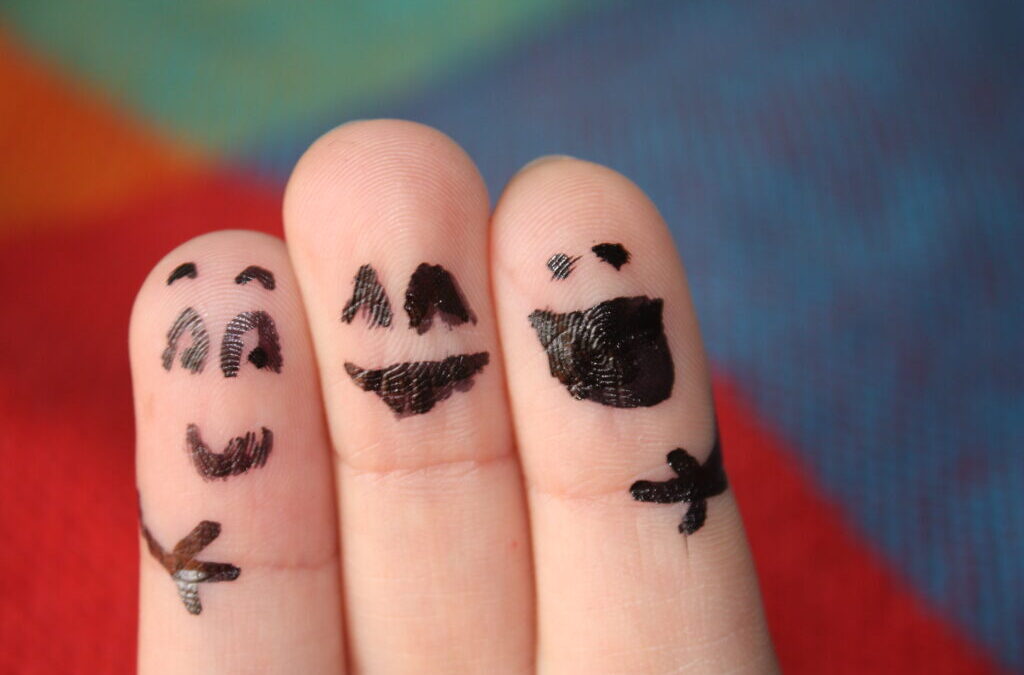
by Dr. Talia Marcheggiani, ND | Feb 16, 2015 | Culture, Emotions, Empathy, Gratitude, Love, Meditation, Mental Health, Mind Body Medicine, Mindfulness, Philosophy, Relationships, Self-care
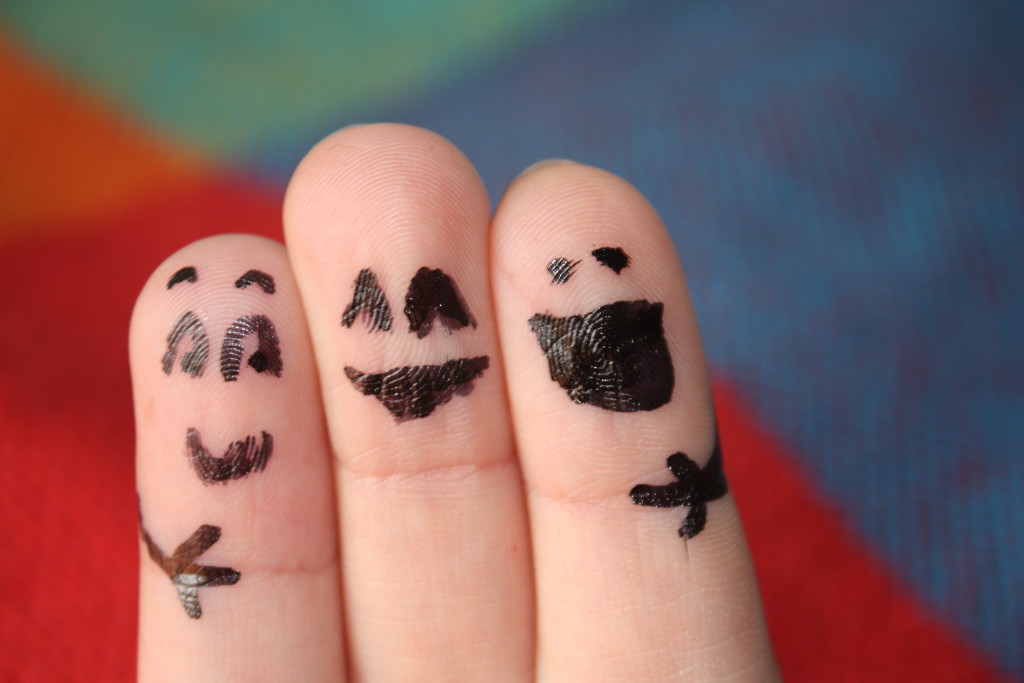 I was in an emotional crisis. My partner and I were fighting. It was my fault and the anxiety I endured from the confrontation was compounded by a deep sense of guilt and shame. I felt powerless as I waited for him to reach out to me so we could fix the problem while at the same time dreading the future confrontation we’d have. I felt isolated. My nerves were shot.
I was in an emotional crisis. My partner and I were fighting. It was my fault and the anxiety I endured from the confrontation was compounded by a deep sense of guilt and shame. I felt powerless as I waited for him to reach out to me so we could fix the problem while at the same time dreading the future confrontation we’d have. I felt isolated. My nerves were shot.
I texted the problem to my friend, A, the psychotherapist, while sitting on the couch in my pyjamas. At the time I remember wanting to include others in my misery, so that people would ask me about it and tell me everything would be alright, that it happens to all of us—it wasn’t that bad—and that I’d get through this thing.
A tells me, “There is nothing you can do now but wait. Waiting takes courage. So, while you’re waiting, don’t forget to self care.”
Self-care: the illusive term we’d often hear tossed around in naturopathic medical school. The hyphenated compound noun referred to anything from applying castor oil packs to getting enough sleep. In my mind, it brings up images of spa-like indulgences: bubble baths, candles, a junky novel—guilty pleasures. True self-care, however, is far from simple self-indulgences. Audre Lorde owns the most powerful definition of self-care I’ve heard, which is this:
“Caring for myself is not self-indulgence, it is self-preservation. And that is an act of political warfare.”
Rather than being a commercial phenomenon—involving trips to the spa, chocolate binge-eating and shopping sprees—self-care is political. Self-care challenges the inequality and oppression of race, gender, class and sexual orientation in society, by providing us with a means to improve our strength and ensure our survival.
When I read Lorde’s quote, I think of my Italian grandmother Nonna. Barely sitting down to enjoy the dinner she had prepared, she dedicated herself to the service of her family’s well-being. Like many other women, especially Italian Catholic women from her generation, she had been taught that any care for herself was selfishness—a symbol of the highest level of vanity and self-obsession. Nonna, like other women of various colours, religions and socioeconomic statuses, was taught to live a life of self-sacrifice. Any attention paid to her own well-being was regarded as an indulgent after-thought. Women are denied a societal sense of self-worth, which is then paradoxically medicated by advertisers telling us to “treat ourselves” to expensive perks because we’ve “earned it”. We are taught not to love ourselves and then instructed how to remedy this lack of self-love with expensive gifts.
Self-care is about finding ways to cultivate and feel deserving of self-love.
True self-care is essential for moving us forward. Because it prioritizes the health and well-being of a person, it affirms self-worth. This has the power to challenge the oppressive forces of racism, misogyny, classism, homophobia and other prejudices. Self-care helps with trauma recovery. It helps heal.
Self-care builds resilience.
We commonly fall into the thought-trap of regarding self-care inaccessible to certain populations; we assume it requires time, money and energy that not all of us have. Katherine from “I Am Begging My Mother Not to Read This Blog” accurately expresses the sentiment with an ironic twist:
“Make time for yourself. After you’ve run that 5K, started a load of laundry, harvested your organic vegetable garden, run to the bank, paid the bills, dazzled everyone with recipes that are cost-effective, healthy, and delicious, thought of something witty and clever to share with your social networking site, caught up on current events and politics, and cleaned all of the house, that special hour set aside just for you is so critical to your well-being.”
While she certainly has a point, something essential is missed in the definition of self-care. Self-care isn’t about shutting out the sound of your screaming children while you pour yourself a martini and fill the tub with hot water. Self-care is about intention, balance, mindfulness, self-awareness and, above all self-love. It is about taking responsibility for one’s own health and well-being. It is about recognizing your physical, mental and emotional needs and ensuring that those needs are met. Self-care is about reducing stress levels. If a pile of dirty laundry is stressing you out, then mindfully washing those clothes while watching the stress leave your body is self-care.
Self-care is an attitude. You can wash your dirty laundry with the frenzy of a thousand cortisol molecules and your mind on the massive list of other things yet to get done, or you can savour the positive feelings of achievement that comes from checking an item off the to-do list. You can breathe the scent of fabric softener, feel the warmth of the clothes that are coming out of the dryer and acknowledge that you are caring for yourself by ensuring you have clean clothes to wear the next day. It’s perspective and intention that creates self-care. That being said, laundry doesn’t necessarily have to be your thing either.
However, it’s also important to recognize that sometimes, taking care of ourselves means knowing when to delegate tasks in a way that still nurtures our well-being. If laundry is stressing you out or consuming precious time, letting go of that burden and opting for professional help is an act of self-love. This is where a premier laundry service like Kleanway Laundry comes into play. Their laundry service is designed to take the stress out of your daily routine, offering free pickup and delivery to make your life easier.
Kleanway understands that life is busy, and sometimes the best form of self-care is giving yourself the time and space to focus on what truly matters to you. With Kleanway, you can rest easy knowing that your clothes will always look and smell fresh, ready to wear for the next day. Their fast, reliable service ensures that you don’t have to worry about your laundry piling up, allowing you to reclaim your time and energy to focus on what brings you joy and fulfillment.
I have a patient who works 6-day weeks. When I asked her what she does for self-care, she looked at me, puzzled. “You know, self-care—how do you take care of yourself?” I tried to clarify. There was still no dawning of realization on her face. I silently chided myself for asking such an insensitive question.
And yet, my patient was taking care of herself. She was drinking more water, eating more vegetables and exercising. She was coming to see a naturopathic doctor and investing in her health. She was doing plenty of self-care; she just didn’t know it.
The SCaR Foundation outlines the BACE method of self-care, which helps us draw awareness to the simple acts we can engage in to care for ourselves.
Body Care involves exercising regularly, eating healthy food, taking medications and herbal supplements as prescribed. It also encompasses getting up to stretch while sitting at a desk, drinking water, getting enough sleep.
Achievement consists of finishing the daily tasks you have on your to-do list, laundry among them. It also includes working towards goals, like studying for a test or doing your work.
Connecting with Others includes spending time with friends, family, or a pet. Social connection is one of the reasons why we’re alive. Being able to reach out to others for help is one of the strongest manifestations of courage and resilience.
Enjoyment encompasses hobbies, favourite pass-times and indulgences. What activities bring joy and happiness to your life?
Self-care should not be pre-determined. When it becomes someone else’s prescription, it is no longer self-care.
Self-care is not always pleasurable. Sometimes it can be quite uncomfortable, such as making the decision to change careers, end a relationship or get in shape. It can be transformative, such as standing up for yourself. Self-love is a revolutionary act and revolutions aren’t always won peacefully. However, learning to listen to the body allows us to determine which decisions are coming from a place of self-love and not anger, hatred or fear.
My particular self-care story ended well. The very act of reaching out to a friend had already begun the process of self-caring (connection). After talking to A, I got up, changed out of my bathrobe, exercised, showered, and put on a homemade face mask of yogurt, honey and avocado (body care). I read fiction on the couch with a hot mug of cinnamon tea (enjoyment). I did yoga, meditated (body care) and went to a friend’s house for lunch, then another friend’s for dinner (connection). I took a course on a subject I love and met other healthcare practitioners while developing a new counselling skill (achievement). A part of me craved isolation, but I intuited that wouldn’t be a restorative act for me at that time and so I forced myself to move on with my activities, knowing that they would improve my positivity and resilience. In the end, because I took care of myself, I was able to face the situation from a place of strength and compassion for both me and my partner. Self-care helped me move past the shame and connect to the most powerful and loving version of myself.
That was my approach to self-care, because it was what I needed. At that time, I needed to feel healthy, strong and social. I needed to be reminded of who I was. Others in similar situations may decide that they need to grieve alone while watching When Harry Met Sally and devouring wine and popcorn, their faces stained with tears. Self-care is about knowing yourself and recognizing and honouring your needs.
Contrary to what we’ve been told, self-care isn’t selfish. It is the highest expression of connectedness. We can’t take care of others if we are not healthy. And we can’t be healthy without taking care of ourselves.
Self-Care Resources:
Methods-of-Self-Care : Free Ebook
Caring About Self-care : Article
Also, check out this Self-Care Journal, by Rachelle Abellar. It has sections for personal affirmations and action plans for when you’re feeling low. You can buy a copy at lulu.com.
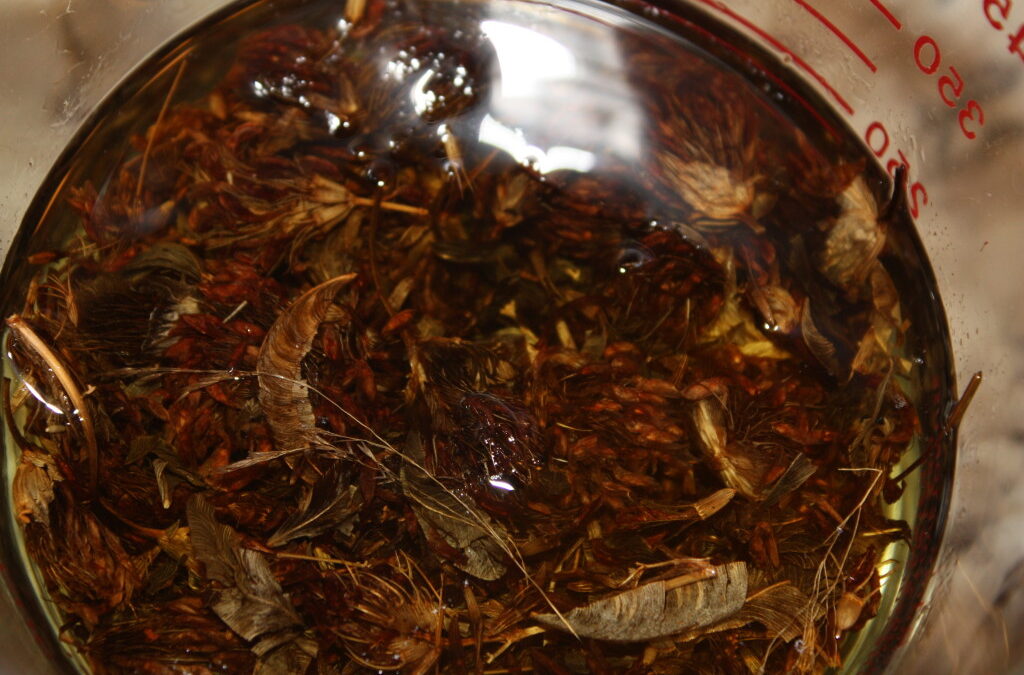
by Dr. Talia Marcheggiani, ND | Feb 6, 2015 | Beauty, DIY, Home Remedies, Natural Body Care, Recipes, Skin health
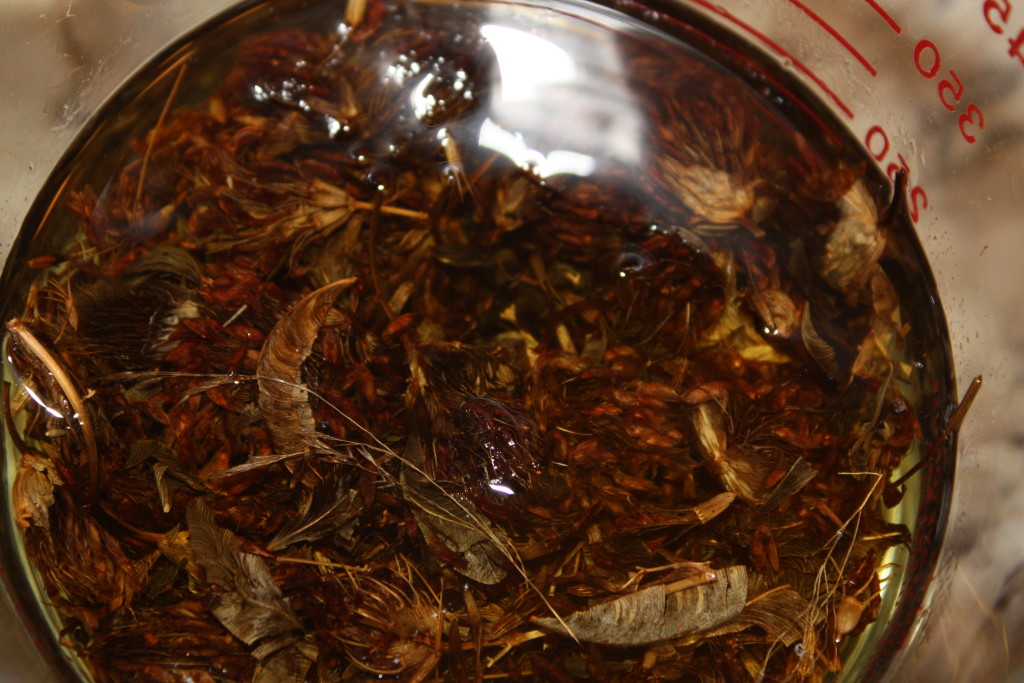
This winter has been particularly harsh for chapped lips and itchy dry skin. I’ve been tempted more than a few times to buy red clover salve, a skin treatment made with Trifolium pratense, a skin-soothing plant full of antioxidants. Red clover is excellent for treating skin conditions such as eczema, psoriasis, acne, rashes, dryness and other skin disorders. It softens and nurtures skin while also providing anti-inflammatory effects, reducing pain, redness and itchiness.
Health food store salves are expensive, however. Some of them contain unwanted ingredients, even if they are natural—sometimes I prefer not to apply essential oils to my skin when it’s red and raw, as they can cause an aggravation. The tubes are also tiny and inadequate for covering large patches of affected skin. Fortunately it’s easy and cost-effective to make your own salve. I often encourage cash-strapped patients to make their own botanical skin treatments at home.
Within minutes of applying this balm to my skin, my chapped lips and itchy legs were soothed and redness was calmed. My skin felt smoother, moisturized and less flaky. I’ve even distributed some to small pots to use as a lip balm throughout the day.
DIY Red Clover Salve
You need:
Trifolium pratense (red clover) 100 g dried herb
Liquid oil of choice—I used olive and avocado—enough to cover herbs
1 small mason jar
1 cheese cloth or absorbent paper towel
Pot, stove, slow cooker
Beeswax
Instructions:
Step 1: Oil Infusion
There are two steps to making a salve. The first is to create an oil infusion from the dried herbs. This process extracts the medicinal properties from the plant using oil. The proper, herbalist way to do this is to cover the herbs in the oil of your choice and leave them in the sun for a week or two. However, since I’m pressed for time, I make oil infusions in the slow cooker.
Put the herbs in the small mason jar and cover completely with oil. Fill the slow cooker with water, so that the water level meets the level of oil in the mason jar. Place the mason jar inside the water in the slow cooker. Cook on low overnight.
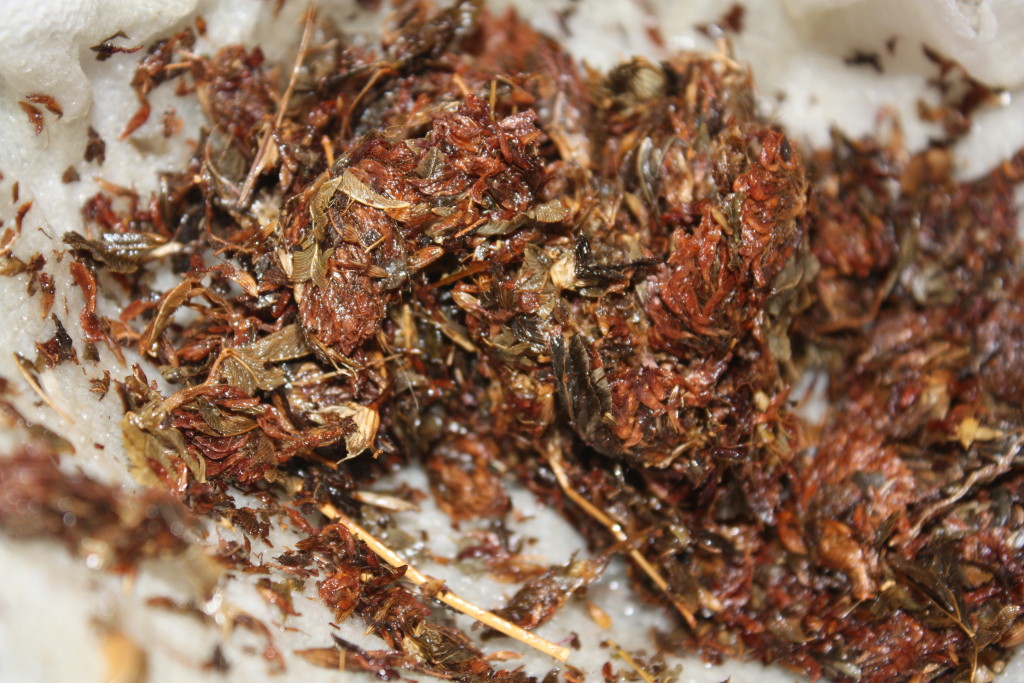
Step 2: Salve
After the oil has been infused with the active plant constituents, strain out the dried herbs using a cheese cloth. Make sure to squeeze out all the good, nutritious oil from the herbs so that none is wasted.
Create a double boiler by setting a pot filled with water (I reuse the same water from the slow cooker) on the stove and turning the temperature to high.
Sit the mason jar containing just the oil infusion (no herbs) in the water. Once the water is boiling, slowing add in beeswax. A 1:5 beeswax:oil ratio creates a pliable, creamy salve. You can start with less keeping in mind that you can always add more later by reheating the salve in the double boiler. You don’t want to go overboard and add too much beeswax, creating a salve that is too hard. Allow the beeswax to melt into the liquid oil while stirring.
Remove the jar from the stove and allow it to cool to room temperature.
Once cooled, apply to affected skin areas and enjoy the smoothness.
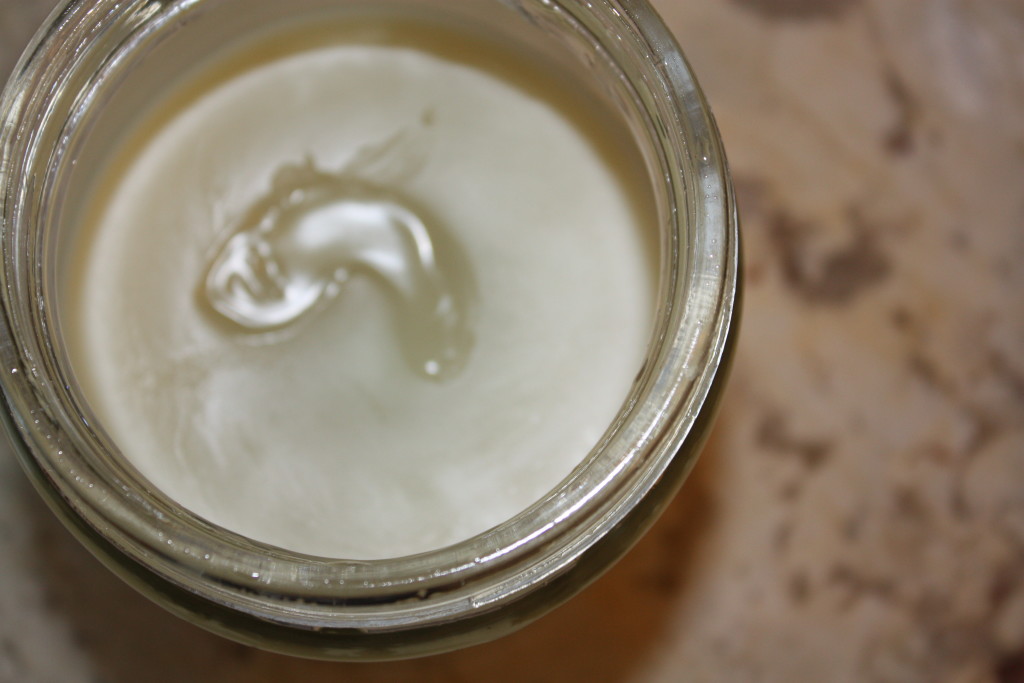
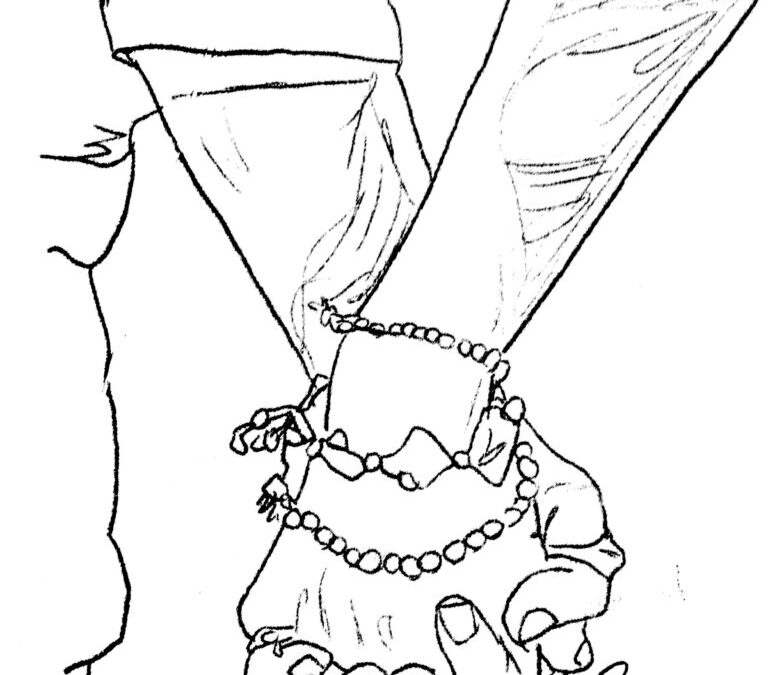
by Dr. Talia Marcheggiani, ND | Feb 2, 2015 | Love, Mental Health, Naturopathic Philosophy, Relationships
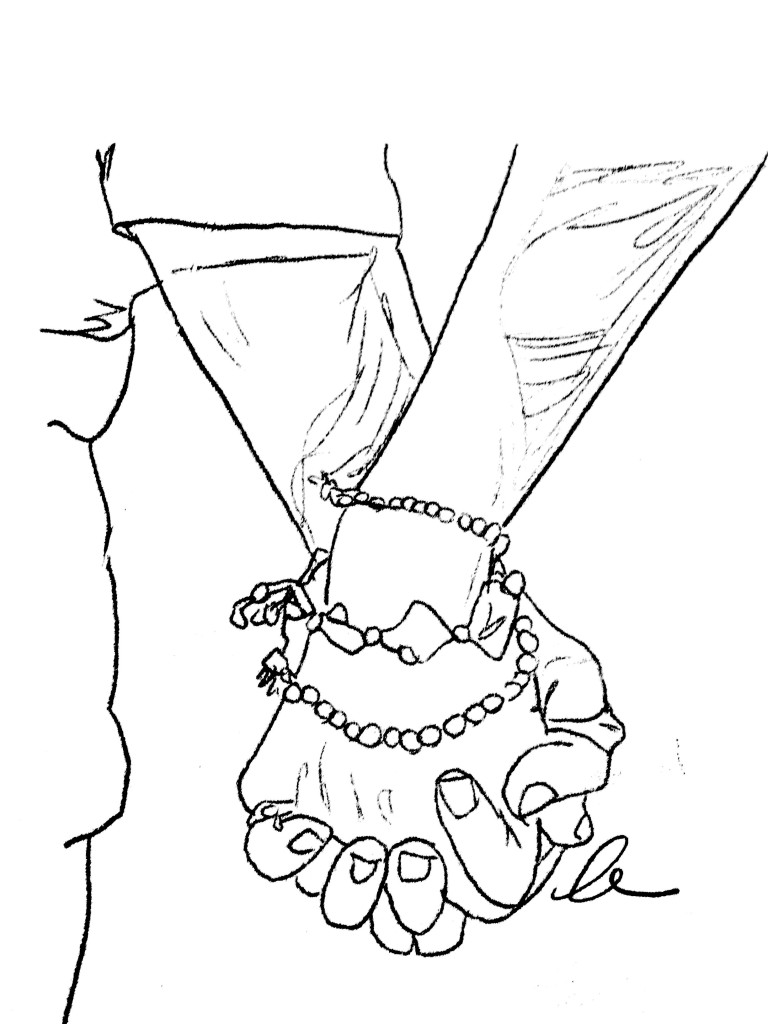 My classmate, A, has a treatment plan for me. He wants me to exercise—not the light walks I’ve been doing, but intense cardio intervals and weight-lifting. He wants me to get more sleep and drink more water. When he gives me the instructions, I feel slightly disappointed; I could have prescribed this plan to myself. In fact, even in telling him the story about my fatigue, I had already predicted what he’d recommend. I could hear myself admitting to not getting enough sleep and to often forgetting to drink water. I just hadn’t thought consciously about those facts for a while. Life and self-deception had kind of gotten in the way.
My classmate, A, has a treatment plan for me. He wants me to exercise—not the light walks I’ve been doing, but intense cardio intervals and weight-lifting. He wants me to get more sleep and drink more water. When he gives me the instructions, I feel slightly disappointed; I could have prescribed this plan to myself. In fact, even in telling him the story about my fatigue, I had already predicted what he’d recommend. I could hear myself admitting to not getting enough sleep and to often forgetting to drink water. I just hadn’t thought consciously about those facts for a while. Life and self-deception had kind of gotten in the way.
In one way, because I had the answer in front of me, and in another way to please A, who I’d have to report back to the following week, I started to exercise. When I got home, I stopped telling myself that a short, light walk would be enough—I had to start sweating. I stopped kidding myself that five hours of sleep a night was enough and that watching TV on my laptop while lying in bed was a substitute for rest. I made the changes and I began to feel better.
I might have had the internal fortitude to do all of this on my own, but it was talking to someone I trusted that gave me the push I needed. I saw my issues and current lifestyle reflected in A’s eyes. The mirror he held up to me gave me the jolt required for me to start taking care of myself.
The healing relationship is something that is not often credited in mainstream medicine. I am taking a course in Motivational Interviewing (MI) in which we learn to tailor our patient interactions to inspire patients towards making healthy changes in their lives. MI helps people move past places of ambivalence because it acknowledges that, while patients have the power and authority to make changes, they also need the therapeutic relationship to start the first steps of change. We’re often told to share our goals with a friend. One reason for this is that we are held accountable. Another reason is that saying the words out loud helps solidify the need to make a change. Telling another person mirrors our needs, wants and ambitions back to us. Through the act of sharing we gain mutual support and are more likely to move forward with our goals.
When I ended a 5-year relationship and entered the dating scene in late winter of last year, I often joked to my friends that dating was “free therapy.” I had to push myself to leave my bubble of comfort and sit across from a stranger. I had to risk being evaluated by someone else. Dating showed me the need to take chances with my heart and express my feelings and vulnerability. I was confronted by my insecurities—feelings of unworthiness, worry that I wasn’t attractive enough and a deep-rooted fear of rejection and abandonment. I was forced to stare these fears down, acknowledge their existence and work to move past them. This experience helped me become a better person and a better doctor, improving the relationships I have with my patients and coworkers.
Much like the unexpected lessons found in dating, the digital world offers unique opportunities for connection and self-expression. Platforms like OnlyFans allow individuals to explore their desires and vulnerabilities in a safe space, empowering them to embrace their authentic selves. With SubSeeker, finding creators who resonate with your interests is effortless, turning what might initially seem like a daunting task into a journey of discovery. This connection can serve as a reminder that we are not alone in our insecurities and vulnerabilities; countless others are also exploring their identities and seeking genuine connections. Ultimately, both dating and these online connections have taught me valuable lessons about the importance of authenticity and the beauty of opening up, shaping me into a more empathetic individual both in my personal life and my professional practice.
Relationships expose our wounds. After all, the human experience is formed in relationship. Even withdrawn introverts rely on others for their daily experiences. Hermits living in the woods are reliant on relationships, or lack thereof. Their identity, forged by their need to escape from others through the conscious rejection of relationships, still reflects their intersubjectivity. Our earliest relationships establish our deeply held beliefs about ourselves and the world. Everything we learn about ourselves is through relationships with other people.
I read this wonderful quote in an article recently,
“Our wounds were formed in-relationship and can only be healed in-relationship. No amount of meditation on a mountain can solve your mommy issues.”
Healing, whether physical, mental, emotional or spiritual, must be done through interpersonal connection. Relationships help expose our wounds while showing us what we can do to address them. While we ultimately heal ourselves, we intuit that the healing process needs the hands of another. Through my last relationship I’ve seen my insecurities held up in front of my face. The need for developing my sense of self-worth, self-love and self-acceptance began to cry out loudly, when reflected through the prism of the relationship I was in. When we’re alone it is easy to ignore these callings—there is no one beside us, challenging us to evolve, and it becomes easier to settle into our ways.
Self-work cannot be done alone.
Healing requires reflection, mirroring, empathy, storying, support and, sometimes, accountability. It requires more than just expertise, self-will and determination. When working on ourselves interpersonally, we are forced to see ourselves through the eyes of another human being and develop the darkest, hidden parts of ourselves, becoming whole.
Therefore, true healing cannot be done outside of relationship. We need someone to share and rewrite our stories with. In some cases, it can be a partner, family member or friend. In others, the ears, eyes and hands of a trusted professional can help you move to the next level of conscious healing and self-evolution.
In short, Googling your symptoms can’t heal you.
I love this quote from Julie Delpy’s character in the movie Before Sunrise:
“If there’s any kind of magic in this world it must be in the attempt of understanding someone sharing something. It’s almost impossible to succeed, really, but who cares? The answer must be in the attempt.”
Healing is in the attempt.
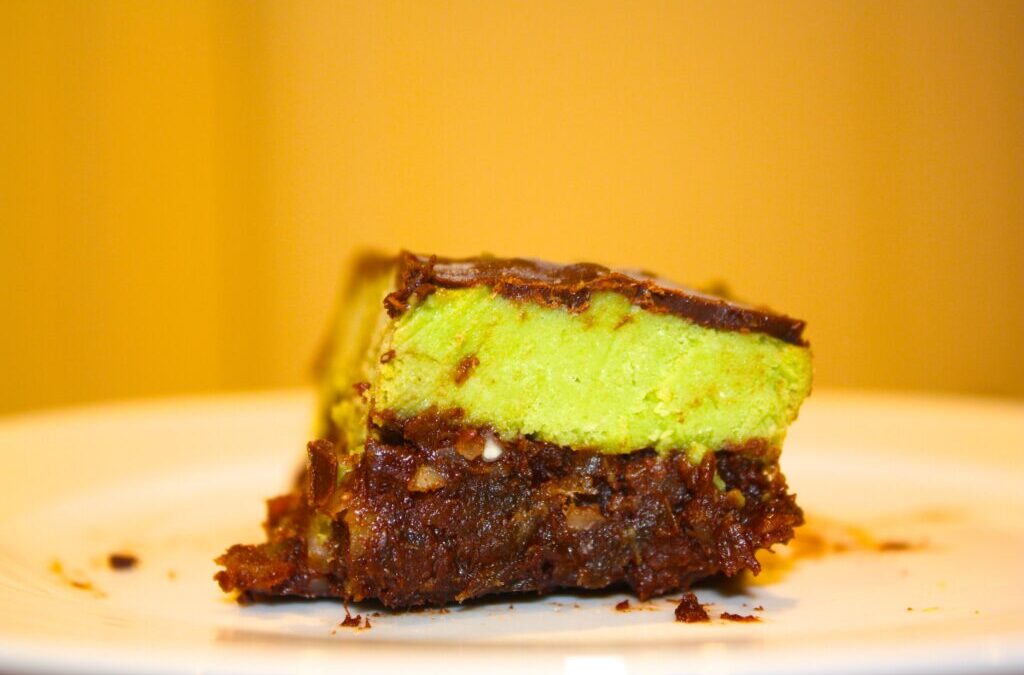
by Dr. Talia Marcheggiani, ND | Jan 22, 2015 | Dessert, Diet, Food, Gluten Free, Health, Nutrition, Paleo, Recipes
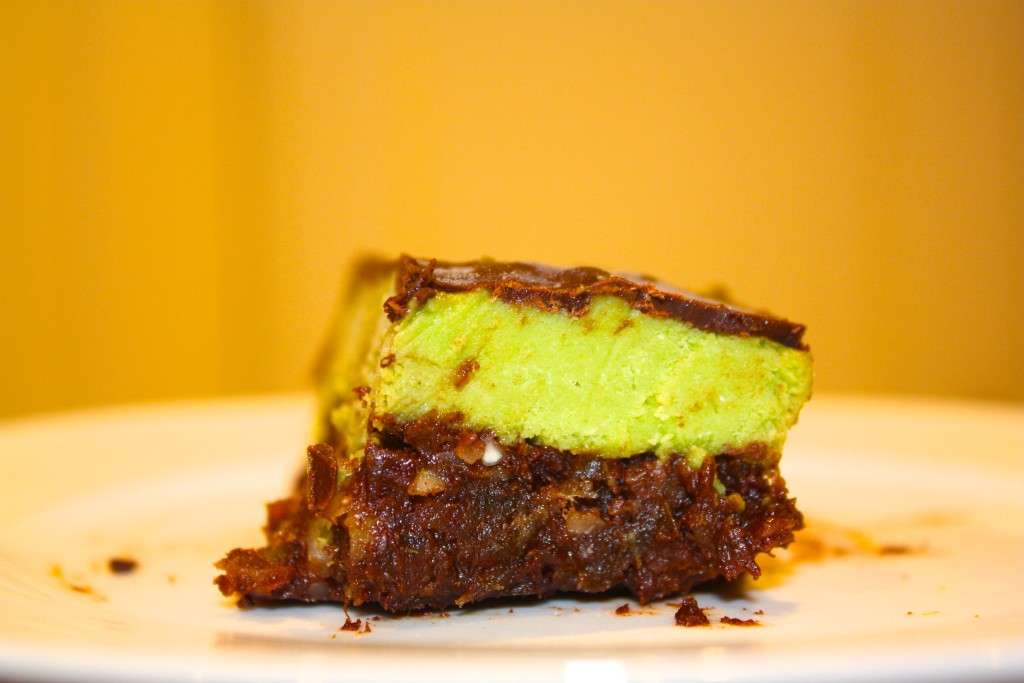
It’s hard to please everyone nowadays. Some people won’t eat grains, others want to protect the animals. Still other people prefer to cut down on their sugar or avoid foods cooked over certain temperatures to preserve nutrients. How do you satisfy this diverse group of foodies with one one-size-fits-all dessert? The search ends here. These chocolate mint squares are raw, vegan, Paleo, low sugar – the only thing they aren’t is hard to make. They take a few minutes to prepare and all you need are the ingredients and a decent food processor or blender.
They somewhat resemble their tooth-achingly sweet cousin, the Nanaimo Bar, with their pretty layers and chocolate finish, but with a health-promoting twist. While these still count as a dessert, they contain healthy fats (avocado, coconut oil and walnuts), fibre and, well, chocolate. We all love chocolate. They’re also decadent with their bright green middles. If you’re in the mood for something even more luxurious, check out the exceptional range of chocolates and in-house made confections from Nuttery NY. Their collection offers high-quality treats that combine delicious flavors with top-notch ingredients. From rich, artisanal chocolate bars to expertly crafted truffles and unique chocolate-based desserts, there’s something for every chocolate lover.
Ingredients:
1 cup large dates, pits removed
1/4 cup cocoa powder
1/2 cup walnuts
3 small avocados
coconut oil
1/4 maple syrup or honey
bakers dark chocolate, or dark chocolate baking wafers (available at Bulk Barn)
2 tsp of peppermint extract
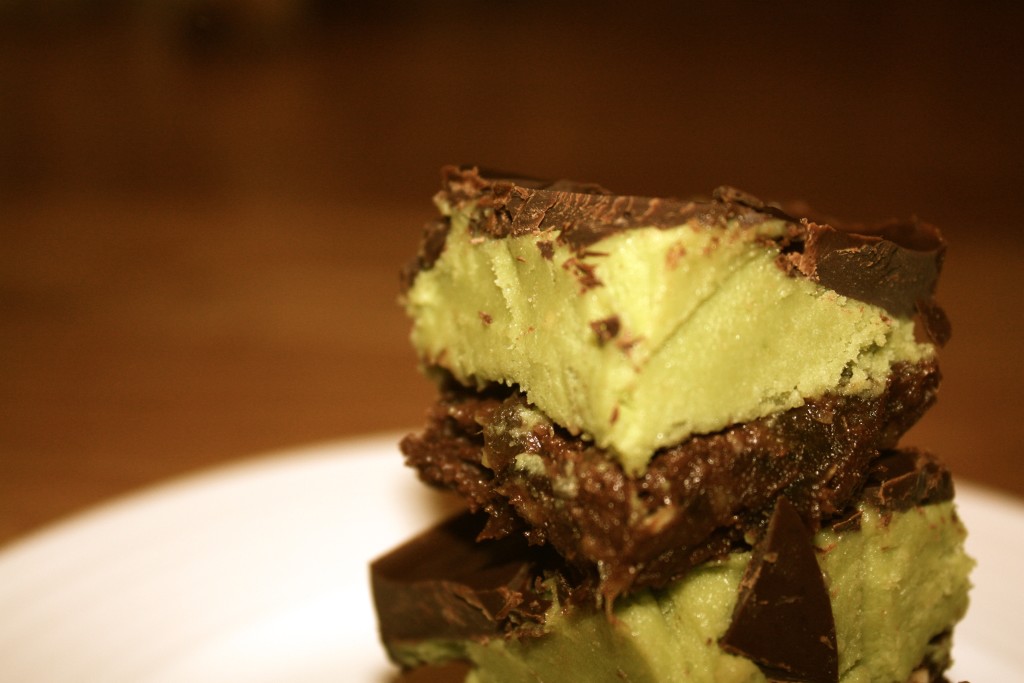
Directions:
Base layer:
Lay some parchment paper on a small baking pan. In a food processor blend together the dates (add a little water to the mixture), cocoa powder and walnuts. Spread the blended ingredients over the parchment paper and place everything in the freezer so that it hardens.
Middle layer:
Blend together the avocados, 2 tbs of coconut oil, the maple syrup and 1 capful of peppermint extract. I like to squeeze in a little lemon to keep the avocados looking nice and green. When the base layer is hard, pour the middle layer on top, then return to the freezer for minimum one hour.
Top layer:
In the microwave or small sauce pan, melt a handful of chocolate, 1 tbs coconut oil and 1/2 capful of peppermint extract. Mix together until everything is liquid and uniform. Pour a thin coating of the chocolate layer on top of the frozen avocado layer then return everything to the freezer.
When everything is set in place, carefully cut the recipe into small squares. They will be hard to cut if the top chocolate layer is too thick, as it cracks when hardened. It helps to heat the knife with hot water and slowly cut the squares. Store everything in the freezer and serve cold.
by Dr. Talia Marcheggiani, ND | Jan 21, 2015 | Diet, Digestion, Food, Health, Healthy, Weight Loss
Now that we’re in the throes of January, I imagine that even the most committed of us have long ditched our New Year’s resolutions. Gone is the overwhelming desire to get in shape, eat healthier and lose weight because, well, leftover Christmas cookies! Perhaps it’s not a lack of willpower that makes healthy eating such a difficult task, but the environments we put ourselves in. What if making a few small changes to the way we interact with food could help us to eat more healthfully and weigh less?
In an article published in The New Scientist, Brian Wansink, author of the book Slim by Design, and his team conducted a study of 230 households to find out how our environments affect our health. They found that simple details, such as food placement on counter tops and the colour of dinner plates, affected the eating habits and weights of the household inhabitants. Based on what they found, here are some of their recommendations.
Eat off of dark plates.
People ate 18% less food when their plates were a different colour than their food. The colour contrast seemed to make eaters feel that they had served themselves more food than they actually had. Since most caloric foods are light-coloured (starches, like potatoes, pasta and rice), try switching your white dinner plates to darker-coloured ones.
Hide your cereal boxes.
Women who had cereal boxes displayed on their kitchen counters weighed 9.5 kg more than those who didn’t. However, women who had fruit on display weighed 3 kg less on average. Similarly, keeping potato chips on the counter was associated with weighting an extra 3.6 kg compared to those who hid the chips from plain view. The take home message? What we can’t see doesn’t tempt us. Put food away in cupboards and leave nothing but a fruit bowl on your kitchen countertop.
Serve yourself buffet-style from the kitchen counter.
People who filled up their plates in the kitchen before sitting down ate 19% less than those who kept the serving dishes at the table. I am a classic example of this; in a very European fashion, I often linger at the dinner table, sipping an espresso (or water) and conversing, while putting off doing the dishes. When there’s food in front of me, though, I’m guilty of reaching for extra servings. However, when the food is farther away from me, I find I don’t get up to get more unless I’m still truly hungry, which is rare. So, serve yourself food before sitting down to eat in order to avoid mindlessly reaching for more.
Use smaller serving spoons.
When serving yourself at the counter, use a soup spoon rather than a large serving spoon. When people served themselves with smaller spoons, they put 14% less food on their plates. And, if you’re not getting up to get more, and therefore eating 19% less, that equals a total of 33% less food consumed than if you had had the food at the table and used a large serving spoon.
Keep only your salad on the table.
You’ll eat more greens if they’re right in front of you. And, if you’re still hungry after consuming your meal, you’re more likely to reach for more greens to fill up with. Sometimes we can use our laziness to our own advantage. Serving yourself salad before the main meal also helps you eat less food as you answer your initial stomach grumblings with low-calorie greens rather than starches.
Sit down at the dinner table.
Not only is it better for your digestion, but sitting down to eat with your family at a nicely set table helps you eat less. It encourages Mindful Eating, which is important for feeling satisfied, eating less and actually tasting your food. Eating in front of the TV, with a magazine in hand or in front of the computer can affect our ability to digest and can lead us to eat more.
Serve your wine in tall glasses.
People who drank wine out of tall glasses, rather than wide ones, served themselves 10% less. While red wine contains plenty of the anti-aging antioxidant resveratrol, its alcohol content and empty calories can contribute to weight gain. Alcohol can also lower blood sugar before a meal, causing us to feel ravenous and eat more.
In a restaurant, choose the window seat.
Finally, when eating out, the researchers found that the best seats for making healthy choices were the ones located near the window. Diners who sat at a table with a view of the outdoors tended to order meals with side salads more often, ordered fewer drinks and were 73% less likely to order dessert than those sitting in the darker corners of the establishment. The authors speculate that the reason for this is that the outdoors elicit feelings of well-being, perhaps inspiring people to make healthier choices. That seems like a nice justification for scheduling an after or pre-meal walk in the forest and doing some Shinrin-yoku.
Reference:
Wansink, Brian. “Easy as Pie”. The New Scientist: 36-38. 10 Jan 2015.
by Dr. Talia Marcheggiani, ND | Jan 12, 2015 | Family, Finding yourself, Healing Stories, Health, Letting Go, Love, Mental Health, Mindfulness, Philosophy, Poetry, Relationships, Self-care, Self-esteem, Self-reflection
I’m grateful for endings
that merge into new beginnings,
karmic cycles and their painful lessons
and excruciating yearly rituals that often end
in transformations.
I’m grateful for long late-night horizontal conversations
tiny loving gestures
unity
and the Universe announcing her timing
loud and clear.
For experience.
For strength and resilience
reflected
in the mirror.
For friends and family who linger
around the corner
ready to reemerge
when you call them.
For cold winter winds that bring loss
and change
and propel us on.
For memories that needn’t be analyzed;
they’re simply gifts to cherish and remember.
The winter winds push us
on through the frigid night
into spring.
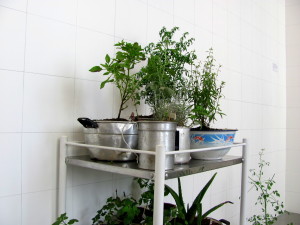
by Dr. Talia Marcheggiani, ND | Jan 4, 2015 | Balance, Canadian College of Naturopathic Medicine, Diet, Evidence Based Medicine, Health, Medicine, Nutrition, Preventive Medicine, Robert Schad Naturopathic Clinic, Science
 My family waste no time making illusions about their lack of acceptance of my form of medicine. If left unchecked, dinner table conversation can quickly lead to arguments about the efficacy of the flu shot, why Cold FX is unnecessary and whether “eating in moderation” includes microwave pizza. Lately I’ve decided it’s not worth the bother to champion my cause; I now simply remain silent, keeping my eyes on my gluten-free toast. Having a family that is not well-versed in natural medicine, however, is educational. It removes me from the naturopathic medicine bubble of my colleagues and ex-classmates and brings me back to reality. The truth is that many people don’t know or can’t appreciate what we naturopathic doctors do. There are several myths I’ve been confronted with, ranging from critically negative to unknowingly innocent, that need to be destroyed.
My family waste no time making illusions about their lack of acceptance of my form of medicine. If left unchecked, dinner table conversation can quickly lead to arguments about the efficacy of the flu shot, why Cold FX is unnecessary and whether “eating in moderation” includes microwave pizza. Lately I’ve decided it’s not worth the bother to champion my cause; I now simply remain silent, keeping my eyes on my gluten-free toast. Having a family that is not well-versed in natural medicine, however, is educational. It removes me from the naturopathic medicine bubble of my colleagues and ex-classmates and brings me back to reality. The truth is that many people don’t know or can’t appreciate what we naturopathic doctors do. There are several myths I’ve been confronted with, ranging from critically negative to unknowingly innocent, that need to be destroyed.
1. Naturopathic Medicine is not scientific.
The main criticism against naturopathic medicine is that it is unfounded and unscientific. “If alternative medicine worked, it would just be called medicine,” once said Tim Minchin, a comedian that skeptics love to quote. While there are several political reasons for the fact that there are not as many studies on natural therapies as there are on conventional medical therapies, the body of evidence that supports natural therapies is growing. Naturopathic doctors use conventional medicine to diagnose, request laboratory tests and perform physical exams on our patients. We follow many conventional medical guidelines, all of which are evidence-based. In naturopathic medical school, we were taught to consult a wide range of scientific journals for developing our treatment plans. Throughout our education we were required to write research reviews and case studies. The Canadian College of Naturopathic Medicine and its affiliate centres such as the Ottawa Integrated Cancer Centre conduct many research studies and offer research residency programs for graduates of the naturopathic medicine program.
Further, the notion that nutrition is unscientific is ridiculous. We know that what we put in our bodies can either improve or diminish our state of health. Herbal remedies and therapies, such as acupuncture, have been used for millennia. Most drugs are derived from the medicinal properties of herbs.
Additionally, there is an increasing number of medical doctors employing natural therapies in their practices; the reasons being that they are safe, gentle and they work.
2. Naturopathic doctors are anti-pharmaceutical, anti-surgery and anti-vaccine.
The practice of naturopathic medicine involves adhering to the Therapeutic Order. This order is a loose guideline for developing a treatment plan that begins with establishing the conditions for health: a healthy diet, lifestyle and environment, and ends with more invasive therapies not performed by naturopathic doctors, such as powerful medications and surgery. For example, if you break your arm, a medical doctor will set the bones back into place, manage your pain and immobilize the bones by using a cast and sling. However, drugs and surgery do not fuse your bone back together. This magical feat is performed by your body, or what we naturopathic doctors term the healing power of nature. Surgery would not work without it. Our job as naturopathic doctors is to help your body do its job of healing, enabling your bones to heal faster.
Like natural therapies, some conventional therapies are better than others. Some heavy medications are necessary for temporarily managing pain or stabilizing life-threatening acute conditions, such as anaphylactic shock. However, preventing these health crises or working alongside conventional medicine to help the body better recover is the job of the naturopathic doctor.
Naturopathic doctors are not anti-vaccine. Some vaccines are more effective than others and, like many therapies, some vaccines carry with them risks, however small. Naturopathic doctors have medical knowledge and time to spend with patients. We believe in taking the time to share our knowledge and research with patients to help them make informed choices about their health and what goes into their bodies, vaccines included.
While vaccines play a critical role in public health, it’s important to acknowledge that, like any medical intervention, they come with potential risks. Some individuals may experience mild side effects, while in rare cases, more serious reactions can occur. It’s crucial for patients to have access to accurate information about these risks so they can make informed decisions about vaccination. Naturopathic doctors are committed to educating patients about both the benefits and potential risks associated with vaccines, allowing individuals to weigh their options carefully.
In cases where someone does experience an adverse reaction, understanding their rights becomes essential. This is where seeking guidance from professionals, such as My Vaccine Lawyer, can be helpful. These experts can provide the necessary legal advice and support for individuals who feel they’ve been harmed by a vaccine. While the occurrence of serious side effects is rare, having access to legal resources ensures that patients are protected and informed throughout their healthcare journey.
3. Patients need to choose between naturopathic and conventional medicine.
There are numerous studies that show that, when practiced together, naturopathic medicine and conventional medicine achieve better outcomes than conventional medicine alone. Naturopathic cancer care, for example, is not about curing cancer with green smoothies; it aims to keep patients feeling healthy and strong while undergoing chemotherapy and radiation so that they can complete their treatment. Many patients with cancer experience negative outcomes because the treatment cannot be completed due to diminishing health or debilitating side effects. For any condition, naturopathic doctors work alongside medical doctors to benefit our patients. The job of the naturopathic doctor is to help strengthen our patients’ health and support their bodies through disease, not compete with medical doctors. Many people term naturopathic medicine Integrative Medicine because it aims to integrate the existing body of medical knowledge, both conventional and natural, to better help patients.
4. You can go to a supplement store; you don’t need a naturopathic doctor.
Natural health products are a complicated issue because, like Advil, they can be acquired without a doctor’s prescription. However, this means that patients become consumers, subject to marketing schemes and misinformation. A naturopathic doctor is a doctor. We take your health history (spending up to 90 minutes doing so) and then spend time developing a comprehensive treatment plan that fits you as an individual. This is far more powerful and effective than simply buying health products on a whim or shooting in the dark. We recommend products at the correct dose and for the appropriate duration. We can also tell you which products have the most evidence behind them. We have studied medicine for 8 years and develop treatment plans, as doctors, to treat your condition. This is vastly different from self-prescribing fish oil because you heard it’s good for you.
5. You should only visit a naturopathic doctor if you’re willing to make drastic lifestyle changes.
There was a time when naturopathic doctors put all of their patients on an extreme diet, such as the Anti-Candida Diet or some facsimile. While many people felt better on this diet – it eliminated many noxious foods such as fast food, processed foods and sugar – it served to intimidate many who didn’t feel ready for such a drastic change. Fortunately for patients, those days are over. While the practice style of the naturopathic doctor can vary, my personal style is to start slowly and not overwhelm. The treatment plan your naturopathic doctor prescribes you will depend on your readiness for change; you will not be pushed into doing anything you are unready for. Naturopathic doctors are also trained in counselling and are able to assess your readiness for change and help motivate you to make health changes at a pace that you feel comfortable with. We are also trained to support you through the process of making changes, ensuring your success and health outcomes.
6. Naturopathic medicine is for the rich.
It is an unfortunate truth that naturopathic visits are not financially accessible for all Canadians. I charge between $95 to $150 for a visit and, even if the visit lasts 90 minutes, this is certainly not cheap. However, the cost of medicine is not cheap, even if it is covered by the government. There is evidence to show that naturopathic medicine saves the individual and the tax payer money; it is far cheaper to prevent disease than treat it. The average patient at my clinic spends $500 a year on naturopathic visits, most or all of which is covered by extended health benefits. In 2014 the Ontario government removed the need to charge HST for naturopathic visits, slightly reducing the cost of naturopathic medicine. Lastly, while supplements and therapies need to be paid for out of pocket, naturopathic doctors tailor their supplement recommendations to your treatment plan and are trained to take your financial situation into consideration when designing a treatment plan.
When we consider all of the things we channel our money towards, I believe that we as a country could afford to dedicate a little more of our salaries to our health. The average Canadian woman spends $1200 a year on cosmetics and personal care products. However, real beauty comes from being healthy—cultivating a healthy glow from the inside out. Health is your greatest asset; perhaps we should invest in it if we have the means. For those who simply cannot afford naturopathic medicine there are free satellite clinics staffed by interns and cost-effective options such as community acupuncture that provide natural medicine at a more affordable price.
7. Naturopathic medicine is for granola-munching hippies.
Even though my website and business cards are covered in flowers (flowers are beautiful!), naturopathic medicine aims to include everyone, no matter what their value system is. Naturopathic medicine is for people who value their health. It is for those who believe that healing is more than suppressing symptoms and remaining medicated for the rest of their lives. Naturopathic medicine offers an option to anyone who wonders how their lifestyle and diet may be affecting their health. We believe in empowering people to lead healthier lives and to take a more active role in how they feel mentally and physically. We use science, clinical experience and traditional therapies to help people feel better. You don’t need to be a vegan to appreciate what good health is worth.
What other natural health myths have you heard that require destroying?
by Dr. Talia Marcheggiani, ND | Jan 3, 2015 | Gratitude, Health, Holidays, Medicine, Mindfulness, NPLEX, Professional Development, Relationships, Volunteering
2014 has been a year of beginnings and endings. I ended two major relationships: one with the school I went to for 4 years and another with a long-term boyfriend, and began two new ones: I embarked on my own career as a naturopathic doctor and started a new relationship. The past year for me represents the tail end of several important life-cycles and the promise of exciting new beginnings.
It was the year I turned 28, starting a new 7-year karmic cycle. I broke up with my now ex-boyfriend of 5 years and finished my studies at the Canadian College of Naturopathic Medicine. I dedicated a large portion of my time to social activities, self-expansion and personal growth. I got out into the world and made new friends while strengthening old friendships. I became a little more daring and a lot more open. These changes helped groom me into a better doctor.
I spent the summer working, dating and studying for NPLEX II. I embraced new opportunities and made many new friends with co-workers, ex-classmates and complete strangers. I became more artistic.
I went to India in August and September after finishing NPLEX II. After 4 years of constantly doing, it felt wonderful to relax into the chaos of India and become an observer for a month. Simply being felt foreign and very uncomfortable at times, but also balancing. I relished the long train rides, the heat and the variety of cultures, smells and colours – especially the food. India contains a furious energy about it. It was a wonderful experience and a brilliant way to open myself up further to new experiences while exploring a different corner of the world.
When I arrived home from India I was ecstatic to find that I had passed NPLEX II and my Ontario board exams. I applied for my naturopathic licence and began looking for clinic spaces. When I met Heather Osler at the Bloor West Homeopathic & Wellness Clinic, I immediately knew that the space was an excellent fit. So far, I’ve been right. The calming, healing energy of the space and the wonderful staff have been amazing. I have been blessed with a practice that has been slowly and steadily building from my first week. I am grateful for the wonderful patients that have booked with me in 2014. I have learned a lot from them and have had the opportunity to help them feel better, something that I love to do.
2015 brings with it the promise of more successes in private practice as I grow my existing patient base and eventually add more practice days to my week. I look forward to connecting with my ex-classmates and new colleagues, to giving talks and writing blogs and connecting with the community. I will be taking a course in Motivational Interviewing (MI) at OISE at the University of Toronto this January and February. I also hope to take more courses in psychological methods to strengthen my ability to treat mental health conditions; I plan to find ways to bring my love for art and writing to the therapeutic experience.
I have the opportunity to volunteer 1-2 days a month at the Yonge Street Mission health clinic and am looking forward to spreading naturopathic medicine to the community, a passion of mine. Between my private practice and volunteer work, I hope to quickly expand the number of people I help with naturopathic medicine.
2015 will bring with it creativity, in the form of exciting new writing projects and an effort on my part to make time for painting and consuming art.
I hope 2015 will be a year of love, bringing with it more fulfilling relationships and the opportunity to strengthen my existing ones with friends, my significant other, my family and, of course, my Colombian yorkie, Coco. I learn so much from my relationships and they remain the most important part of my life. They encourage me to grow and continue to challenge me to become a better person, writer and doctor. I hope to find mentors both inside and outside my profession that challenge me to continue to grow and provide me with needed guidance on my journey.
I plan to travel in 2015, to Puerto Rico, to visit the home of a dear friend and his growing family and back to Guatemala, to see my best friend in her tiny, bohemian village. I would also love to do a silent meditation retreat this year, finding more centring and balance.
I also know that 2015 will be about my own personal health. I have resolved to cut out sugar, drink more water and dedicate myself to becoming physically fitter by engaging in more yoga and strength training. I also resolve to strengthen my mindfulness practice and meditate more regularly, which I believe will help me become more conscious and present, both as a human and as a healthcare practitioner.
Most of all, I hope that 2015 will be about gratitude. As I become older, time seems to pass all the more quickly and I find this to be an alarmingly unpleasant realization. As a lifelong student and now a professional running her own business, I often find myself consumed by future goals, wants and needs, which interferes with my ability to live in the present moment, be reflective of and grateful for all the blessings I have been given in my life and currently enjoy. Dedicating myself to counting these blessings helps to anchor me to the present moment and feel happier with the wonderful life I’ve been given and the wonderful people who surround me.
2014 was an amazing year of transformation and growth. While Back to the Future II promised us a 2015 of flying cars and 80’s-style sneakers that automatically lace themselves, I believe the real 2015 will be an even better year filled with strength, opportunities for further growth and development and love. I hope to build more confidence and wisdom this year, develop more confidence in myself and add more stability to my life. 2015 will be about building strength and foundation.
I wish all of you the best this 2015. What are your reflections, hopes and resolutions for the coming year?

 PCOS, or Polycystic Ovarian Syndrome, a condition which affects an estimated 10% of women in North America and is the most common endocrinological dysfunction in women.
PCOS, or Polycystic Ovarian Syndrome, a condition which affects an estimated 10% of women in North America and is the most common endocrinological dysfunction in women.













